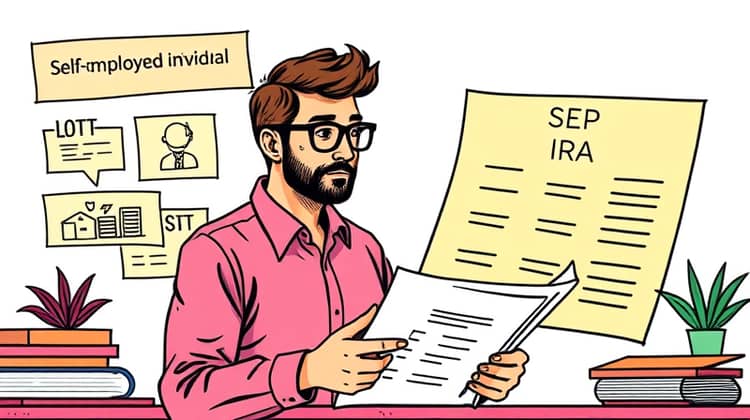Retirement planning is an essential part of financial wellness, especially for self-employed individuals who do not have the luxury of employer-sponsored retirement plans. The transition from working life to retirement can be daunting for anyone, but it presents unique challenges for those who have carved their own paths. This article will explore the specific hurdles self-employed workers face in retirement planning and provide insights into various retirement plan options tailored for their needs.
Understanding these challenges is critical to create a sound retirement strategy. By recognizing the importance of saving and investing wisely, self-employed individuals can better prepare for a future where they can enjoy their retirement years without financial strain.
Unique Challenges for the Self-Employed

Self-employed individuals often pursue their passions with enthusiasm, but this independence can lead to uncertainties regarding long-term financial security. Unlike traditional employees, self-employed workers must navigate their own retirement planning, which requires a deep understanding of both financial products and long-term strategies.
Additionally, self-employed workers may experience fluctuating income streams, which can complicate their ability to save consistently for retirement. Without a predetermined salary, they must develop a budget that accommodates their variable earnings while prioritizing their retirement contributions.
- Lack of employer-sponsored retirement options
- Irregular income streams
- Self-discipline in savings and investments
- Navigating tax implications
These unique challenges demand a tailored approach to retirement planning, ensuring self-employed individuals can establish a secure financial future.
Retirement Plan Options

Fortunately, there are several retirement plan options available for self-employed individuals that can cater to their unique circumstances. Understanding these options can be the key to building a robust retirement fund that meets their needs.
1. SEP IRA
The Simplified Employee Pension Individual Retirement Account (SEP IRA) is an excellent choice for self-employed persons because it allows for substantial contributions. With a SEP IRA, individuals can contribute up to 25% of their income, up to a maximum of $61,000 for 2022. This plan is particularly beneficial in high-earning years, as it provides the flexibility to save more when finances allow.
Additionally, one of the significant advantages of a SEP IRA is that it is easy to set up and administer. There are minimal paperwork requirements compared to other retirement accounts, making it a straightforward option for self-employed individuals who may not have the time or resources to manage complex retirement plans.
- High contribution limits
- Simple administration
- Tax-deductible contributions
- Flexibility in funding
In summary, a SEP IRA can be a powerful tool for building retirement savings for those who are self-employed, providing both flexibility and significant tax advantages.
2. SIMPLE IRA
A Savings Incentive Match Plan for Employees (SIMPLE) IRA is another viable retirement option for self-employed individuals. This plan allows you to contribute a salary deferral of up to $14,000 for 2022, with an additional catch-up contribution of $3,000 for individuals aged 50 and over. The contributions you make to a SIMPLE IRA are tax-deductible, providing immediate tax benefits.
Furthermore, employers (including self-employed individuals) are required to match employee contributions up to 3%, significantly boosting savings potential. This built-in matching feature makes a SIMPLE IRA an attractive option for those who want to maximize their retirement funds without excessive administration.
- Lower contribution limits than SEP IRA
- Mandatory matching contributions
- Tax-deductible contributions
- Easier setup compared to other plans
Ultimately, a SIMPLE IRA can serve as a practical way to establish retirement savings while actively participating in contributions that can enhance your overall savings rate.
3. Solo or Individual 401(k)
Individual 401(k) plans cater specifically to self-employed individuals, combining the features of a traditional 401(k) and a profit-sharing plan. These plans allow individuals to make both employee contributions (up to $20,500 for 2022) and profit-sharing contributions of up to 25% of their self-employment income.
The flexibility in contribution allows for significant retirement savings, especially in highly profitable years.
- Ability to take loans against the account
- High contribution limits compared to other plans
- Tax-deductible contributions
- Catch-up contributions available for those 50 and older
The Individual 401(k) stands out as a top choice for self-employed individuals aiming for aggressive retirement savings.
4. Roth IRA
The Roth IRA is a popular retirement option that offers tax-free growth on investments. Unlike other retirement plans, contributions to a Roth IRA are made with after-tax dollars, allowing individuals to withdraw funds tax-free in retirement.
This option is ideal for self-employed persons who anticipate being in a higher tax bracket during retirement, as they can benefit from tax-free withdrawals later on.
- Tax-free withdrawals in retirement
- No required minimum distributions (RMDs) during the account owner's lifetime
- Diversified investment options
- Option to withdraw contributions without penalty
A Roth IRA adds an element of tax diversification to a retirement portfolio, providing valuable flexibility during retirement years.
Building a Retirement Fund

To effectively build a retirement fund, self-employed individuals must create a structured savings strategy with clear objectives. Establishing a realistic target for retirement savings can guide their contributions and investments over time.
- Set clear retirement goals.
- Determine an appropriate savings rate.
- Choose investment vehicles aligned with risk tolerance and growth goals.
- Regularly reassess and adjust contributions as needed.
By adhering to a well-defined strategy, self-employed individuals can progressively build their retirement funds and secure their financial futures.
Managing Income and Expenses

Effective management of income and expenses is crucial for self-employed individuals aiming for a sustainable retirement plan. Maintaining a budget that accommodates fluctuating income can help ensure regular contributions to retirement accounts despite economic uncertainties.
- Track monthly income and expenses meticulously.
- Establish a separate savings account for retirement contributions.
- Create a financial cushion for low-income periods.
- Review income sources and eliminate inefficiencies.
By taking control of their financial landscape, self-employed workers can successfully navigate the complexities of managing income and expenses to stay on track with their retirement savings goals.
Diversifying Investments

Diversification is a crucial element of any successful investment strategy, particularly for self-employed individuals who must take on the responsibility for building their retirement portfolios. By spreading investments across a range of asset classes, individuals can mitigate risk and improve their potential for creating a robust retirement fund.
- Investing in stocks for higher growth potential
- Allocating funds to bonds for stability
- Exploring real estate investments
- Considering mutual funds or ETFs for diversification
In summary, a well-diversified investment portfolio can provide self-employed individuals with the foundation needed to achieve their retirement savings goals while safeguarding against potential market fluctuations.
Seeking Professional Advice

Navigating retirement planning can be overwhelming, especially for self-employed individuals who may lack financial expertise. Seeking professional financial advice can offer guidance tailored to individual circumstances, ensuring sound decision-making regarding retirement accounts and investment strategies.
Professional advisors can assist in customizing a retirement plan that aligns with financial goals, helping to address the unique challenges faced by the self-employed.
Conclusion

In conclusion, retirement planning for self-employed individuals requires careful consideration and strategic implementation. By understanding their unique challenges and exploring various retirement plan options, self-employed individuals can effectively secure their financial futures in retirement.
It's paramount that self-employed workers take the initiative to prioritize retirement savings by actively managing their finances and seeking the necessary professional guidance when needed.














